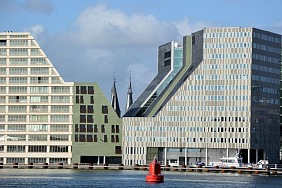Creating a successful remote team retrospective process is essential for any organization that has embraced the remote work model. Retrospectives help teams identify areas that need improvement and provide a platform for team members to share their feedback. With the right structure and processes in place, remote retrospectives can be just as successful as those held in an office.
What Is a Retrospective?
A retrospective is a meeting held at the end of a project or sprint cycle to review and reflect on the team's performance and progress. The primary goal is to identify what went well and what could be improved in the future. Retrospectives are typically run either in-person during a team meeting or virtually over video conferencing tools.
The Benefits of Remote Retrospectives
Conducting remote retrospectives has several benefits, such as:
- Flexibility: Team members can join remotely from anywhere in the world, increasing access and participation.
- Cost savings: Teams save money on travel costs and other expenses associated with in-person meetings.
- Time efficiency: Teams can complete remote retrospectives faster by leveraging online tools and resources.
- Accountability: Remote retrospectives help teams stay accountable for their goals and objectives.
Creating a Successful Remote Team Retrospective Process
To create a successful remote team retrospective process, there are several key steps that should be taken.
Step 1: Choose the Right Platform
The first step in creating a successful remote team retrospective process is to choose the right platform. There are a variety of online tools available, such as Google Hangouts, Zoom, Slack, and Skype, that teams can use to hold remote retrospectives. It’s important to choose a platform that is user-friendly and allows team members to easily share their thoughts and feedback.
Step 2: Establish Clear Ground Rules
Before beginning the retrospective, it’s important to establish clear ground rules. These rules should be shared in advance and discussed at the beginning of the retrospective. Examples of ground rules include:
- Be respectful of other team members’ opinions.
- No side conversations.
- Stay on topic.
- Stay focused on the task at hand.
Step 3: Set Expectations and Objectives
The next step is to set expectations and objectives for the retrospective. This includes setting a timeline for the meeting, establishing the agenda, and outlining the desired outcome. It’s important to clearly define the goal of the meeting and ensure that everyone understands what’s expected of them.
Step 4: Create a Safe Space
Creating a safe space is essential for a successful remote retrospective. This means that team members should feel comfortable sharing their thoughts and ideas without fear of judgement or criticism. It’s important to create an environment that encourages open dialogue and constructive feedback.
Step 5: Document and Follow Up
Finally, it’s important to document and follow up on the retrospective. This includes documenting the outcomes of the meeting, taking action on any decisions that were made, and following up with team members to ensure that the objectives of the meeting were met.
Conclusion
Creating a successful remote team retrospective process can help teams improve their performance, increase accountability, and foster a culture of collaboration and open dialogue. By following the steps outlined above, teams can create an effective remote team retrospective process that will lead to improved results.














